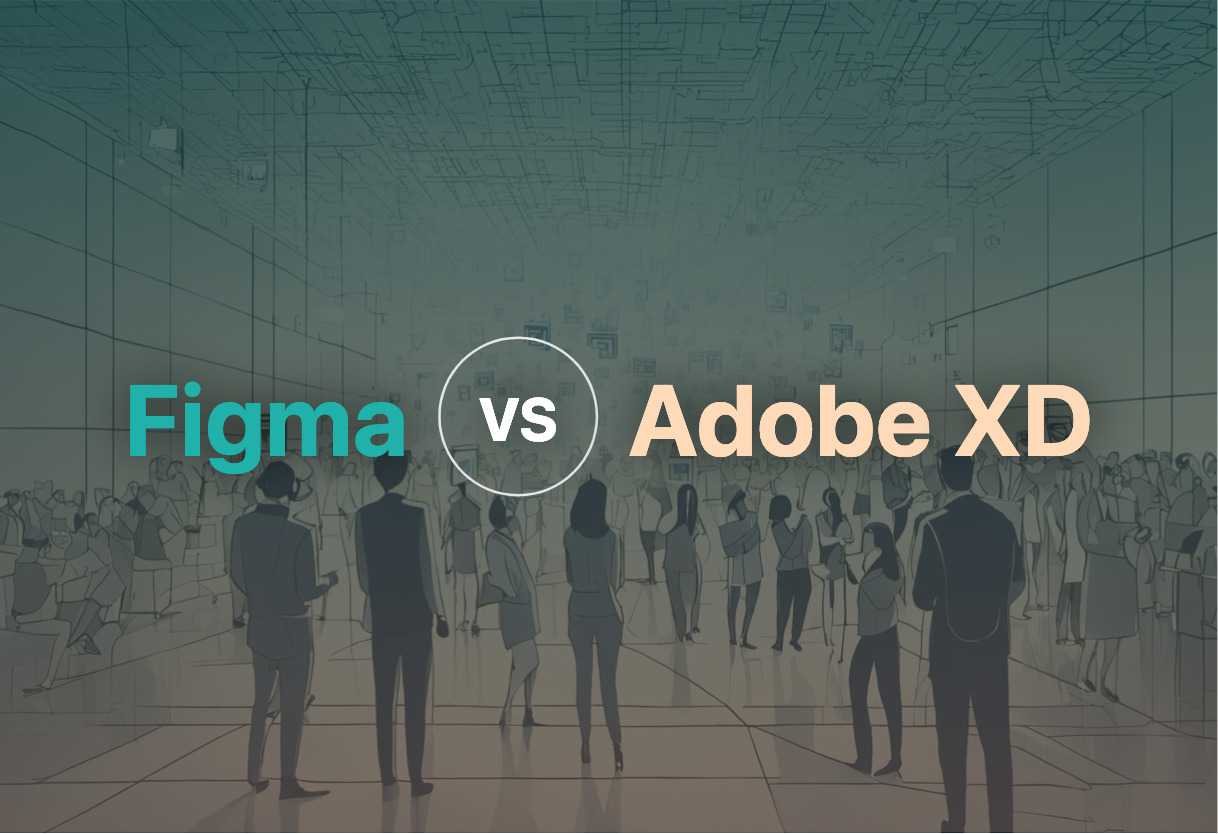Figma is optimal for real-time collaboration with its Google Docs-like interface and versioning system, ideal for teams in need of accessible design tools. Adobe XD, however, offers seamless integration with Adobe ecosystem, making it excellent for designers seeking flexibility and interactive prototyping.

Key Differences Between Figma and Adobe XD
- Collaboration: Figma excels in real-time collaboration; Adobe XD focuses on individual work but allows sharing and commenting.
- Integration: Adobe XD integrates well with other Adobe products while Figma supports third-party tools and has more browser-based app flexibility.
- Prototyping: Both offer prototyping; Adobe XD includes interactive animated prototypes.
- Pricing: Figma offers a free plan, while Adobe XD’s comes free with the Creative Cloud bundle.
- Platform compatibility: Figma is browser-based and works on any OS; Adobe XD requires download and installation.
| Comparison | Figma | Adobe XD |
|---|---|---|
| Focus Area | User Interface/User Experience Design | User Experience Design and Prototyping Tool |
| Key Features | Real-time Collaboration, FigJam (digital whiteboarding capability), Versioning System | Creation of reusable artwork and text across design project, Design and Prototyping of Various Interfaces (E-commerce platforms, marketing sites, etc.) |
| Operating System Compatibility | Any OS that runs a web browser | Windows and MacOS |
| Integration Possibilities | Slack and Third-Party Tools via Live Embed Code, API for integration with Any Browser-Based App (Uber’s Live Design, Atlassian’s JIRA Software), Zeplin | Photoshop and other Adobe Products |
| Prototyping | Yes | Yes, without external programs |
| Team Libraries | Yes, for maintaining central source of truth for UI components | No |
| Pricing Plans | Free, Professional, Organization, and Enterprise with varying features | Starter (Free), Single App, and Creative Cloud All Apps |
| Value Proposition | Minimizes PNG-pong, eliminates need for mediating mechanism to make design work accessible to everyone | High flexibility and speed, streamlined work processes through prototyping without external programs |
| Project Management | Designs kept confidential and accessible only to selected collaborators | Collaboration with shareable URL feature and comment option |
What Is Figma and Who’s It For?
Figma, built as a revolutionary tool to galvanize design communication, brings sizzling innovation in UI/UX design, steering creativity through slick, browser-based instruments. Launched by Dylan Field and Evan Wallace, this universally adaptable tool demonstrates promising allure to both professional designers and novices seeking to maneuver their imaginative prowess into visually delectable designs.
with adept functionality on any OS espousing a web browser, Figma’s broad accessibility syncs harmoniously with its core mission: universal design expressibility. Particularly favorable for distributed teams, internal design squads, freelance/web professionals, or educational purposes, thanks to its auspicious partnership with Google for Education.

Pros of Figma
- Capable of real-time concurrent collaboration
- Platform-independent, supremely adaptable OS compatibility
- Streamlines design workflow by integrating with Slack and other third-party tools
- Potent versioning system with on-demand and auto-options
- Affords simultaneous prototyping and presentation creation without the need of ancillary tools
Cons of Figma
- Potential risk of Adobe acquisition causing unfavorable business model changes
- Competition-reducing impact feared from the proposed acquisition
- Requires stable internet connectivity for seamless operation
What Is Adobe XD and Who’s It For?
Crafting a digital world with an artful amalgam of flexibility and consistency, Adobe XD resides as a dominant force in UI/UX crafting, enabling design and prototyping across a broad spectrum of digital channels. From websites and apps to games and voice interfaces, this tool is a comprehensive suite for digital designers.
Adobe XD, with its robust selection of features, is suitable for designers craving quick, interactive, and high-resolution design workflows. It’s ideal for freelancers, design agencies, and in-house design teams focusing on digital product and interface design. A boon for cross-functional teams due to its UX capabilities, easy sharing, and tight integration with other Adobe products.

Pros of Adobe XD
- Minimizes production times, closely integrates with Photoshop
- Streamlines mobile design with instant viewing option
- Embeds productive features such as Repeat Grid for quick creation of grids
- Supports collaboration with shareable URL feature
- Enriches design versatility with voice command, speech playback features
Cons of Adobe XD
- Limited offline support
- Necessity of Adobe Creative Cloud subscription for full-feature access
- Comparatively fewer third-party extensions and integrations
Figma vs Adobe XD: A game of thrones
An epic performance from two design titans, but critical UX blueprinting calls for a vital verdict: Figma or Adobe XD?
AR/VR Content Creators
For AR/VR creators, Adobe XD’s fantastic prototyping abilities assure higher flexibility and better animation control. Its integration with Photoshop further broadens the design realm, facilitating more advanced, rich user experiences.

Team-based Digital Projects
Collaboration-driven teams should favor Figma owing to its strong collaborative aspect. A Google Docs-like collaboration, live embedding in Slack, and permissions-based sharing enhance real-time teamwork and project consistency.

Individual Design Enthusiasts
Design enthusiasts aiming for quick and effective solutions may align with Adobe XD. The Repeat Grid feature allows rapid grid creation, while the intuitive and minimalist interface facilitates a straightforward design process.

Education Sector
The Education Sector can benefit from Figma’s partnership with Google for Education, enabling wide usability across Chromebooks. This eases the sharing and collaboration, fostering a conducive digital learning environment.

Developers in need of Third-Party Integration
Developers requiring third-party tool assimilation will prefer Figma, which evinces a robust integration system. Its APIs support integration with any browser-based application, enhancing versatility and utility.

In the grand contest of Figma vs Adobe XD, Adobe edges out with its robust animation and prototyping capabilities, ideal for comprehensive AR/VR design. However, for collaborative endeavours, Figma’s real-time teamwork features present a compelling argument. Decisive verdict? Context, as always, is the reigning champion.
Patrick Daugherty
Content writer @ Aircada. Merging AR expertise with a love for late-night gaming sessions.





